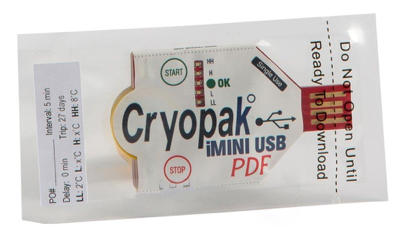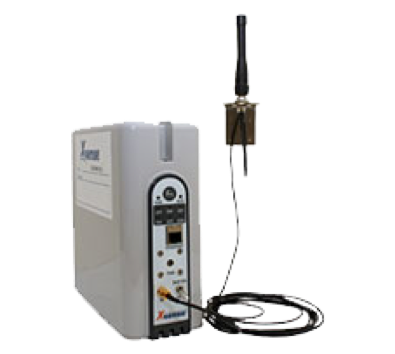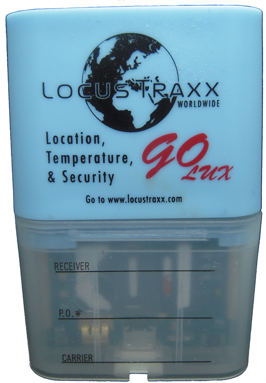Monitoring the temperatures of your fruit—what system to use?
While most exporters agree on the importance of temperature monitoring in export consignments, technical limitations and cost have been the main reasons that very little temperature monitoring has occurred through mango export supply chains.
Instead, exporters have relied on pulp temperature checks at select points in the supply chain such as; departure from the packing shed, arrival at the freight forwarder and sometimes arrival at the importer, to manage the risks of excessive heating and cooling on mango quality. This has failed to detect considerable temperature differences within pallets leading to differing ripening rates and chilling/heat damage between trays. This is a particular risk in airfreight transport where temperature management is typically less rigorous.
The emergence of real-time temperature monitoring can now help the exporter estimate produce quality before arrival at the destination market, and advise how the product should be handled.
A recent mango exporters survey found that the top three factors exporters consider when choosing temperature data loggers are the ease of installation, ease of data retrieval and cost of the data logger.
There are three main types of temperature loggers used in mango exports:
1. USB logger
The most commonly used temperature logger in the mango industry at present is the USB port logger. These digital loggers sold under a range of brands are cheap to purchase, easy to initiate (just press one button) and easily produce a PDF report of the temperature records. In most cases these self-generate upon plugging the logger into a computer. However, they are often not retrieved, and the data is usually not downloaded unless there is a dispute between an exporter and importer, where the data is used to assign responsibility for a temperature breach.
Picture credit: Department of Agriculture and Fisheries, Queensland.
2. Radio frequency logger and communications unit
The last decade has seen the emergence of data loggers that use radio frequency (RF) and a communications unit (CU) located at the importer. The CU retrieves the data wirelessly when the temperature logger is within communication distance of the CU. Hence, there is no need to retrieve the logger to collect the data. The CU is connected to the internet and the data is graphed automatically by the hosting website within several minutes of download, and is available to key stakeholders on a username/password basis. Email alerts can be sent for consignments that suffer from a temperature breach.

Picture credit: http://www.bt9-tech.com.
3. Sim-card-based system
In the last few years SIM-card-based systems have been released that download data direct to the internet in real time, assuming adequate mobile signal. They generally have the same functionality as RF systems but with the added advantage of real time, and an estimate of logger location based on the mobile signal. The main advantage is that you don’t have to physically retrieve the logger to access your data, real time access to the temperature records, and real time tracking of the consignment’s location. One current limitation of most SIM-card-based systems is that they are yet to be approved for use for airfreight.

Picture credit: Department of Agriculture and Fisheries, Queensland.
Years of experience, and a recent trial comparing twelve available data loggers found that:
- Most loggers recorded temperature consistently and within 1°C accuracy of a certified reference temperature source, but there were some differences between the loggers that need to be investigated further.
- Air temperature loggers placed next to a fruit recorded similar temperatures as the pulp temperature of that fruit during typical transport conditions. Therefore, pulp probe loggers are not usually warranted given their extra cost compared with air temperature loggers.
- Air temperature can be 4-6°C lower than pulp temperature at the start of forced air cooling because of the large difference between the air and fruit temperature and the high air flow rate. However, these factors have little influence in road, sea or air consignments where air flow over the fruit is much lower.
Recommendations
The USB loggers are best to use if an exporter is confident the importer will retrieve the logger and send the data. If this is not the case, and there are difficulties with using a RF system, then the exporter could use real time logger systems (SIM-card-based systems). These systems include LocusTraxx Go Real-Time XL for surface freight, or the Sendum PT300D logger, which has approval for use on a large number of international air carriers, but is also relatively more expensive.
Acknowledgements: The Serviced Supply Chains project is funded by the Hort Frontiers Asian Markets Fund, part of the Hort Frontiers strategic partnership initiative developed by Hort Innovation, with co-investment from the Department of Agriculture and Fisheries, Queensland (DAF), Department of Economic Development, Jobs, Transport and Resources (Victoria), The University of Southern Queensland, Manbulloo (mangoes), Montague Fresh (summerfruit), Glen Grove (citrus) and contributions from the Australian Government.
Article submitted by Noel Ainsworth and Yiru Chen from DAF.
For more information contact: Noel Ainsworth, Principal Supply Chain Horticulturist, at DAF; noel.ainsworth@daf.qld.gov.au or (07) 3708 8563.